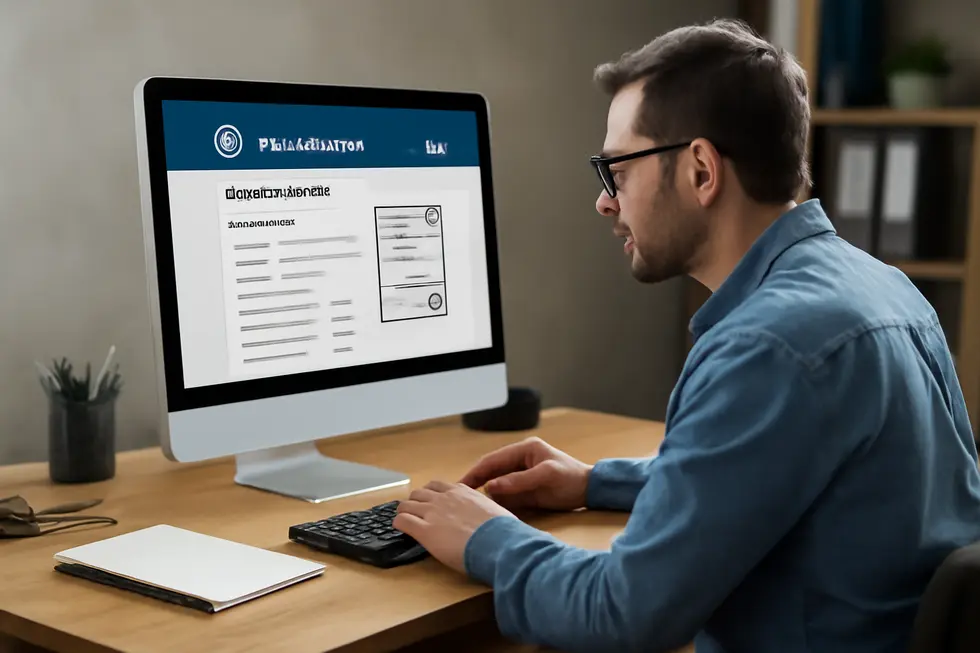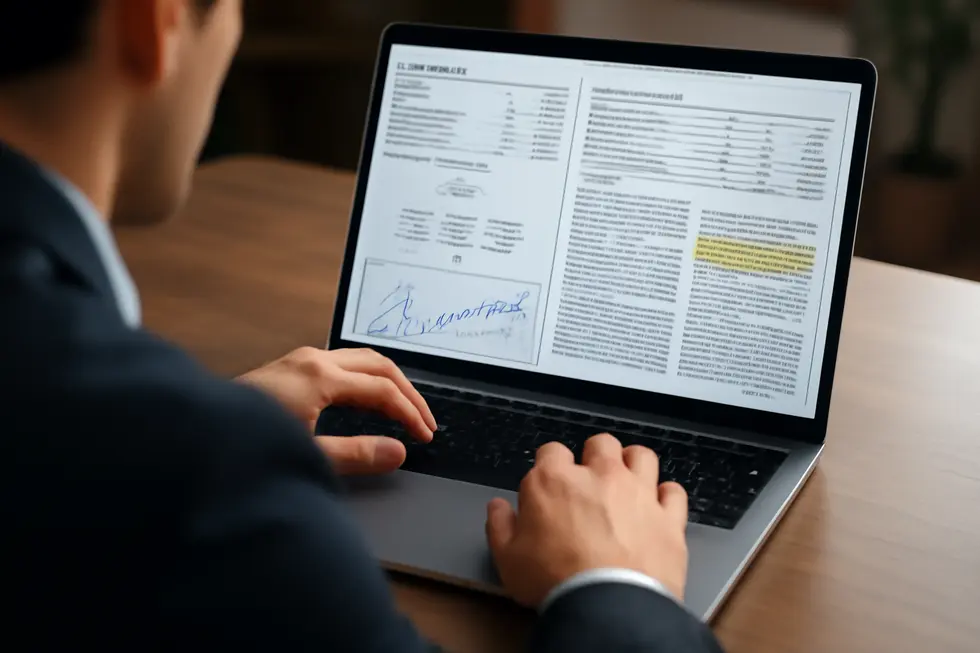Introduction
Understanding who owns a business is vital for various reasons—from partnership decisions and competitive analysis to due diligence and investment considerations. For business owners seeking clarity on ownership structures, there is a strategic process to uncovering these details systematically and efficiently. The initial step begins with leveraging state records to access foundational ownership information filed at government offices. For deeper, more intricate views, especially about complex or multinational businesses, commercial databases provide richer details and historical contexts. Finally, public companies offer an additional layer of transparency through regulatory filings and reports, guiding business owners more precisely in identifying major shareholders and corporate relationships. Each chapter in this guide builds upon the last, equipping you with a comprehensive approach to finding out who really owns a business.
Tables of Contents
Chapter 1: Using State Records to Find Out Who Owns a Business
- Unlocking Business Ownership Details: Navigating State Records with Confidence
- Navigating Legal Boundaries and Real-World Challenges in Accessing State Business Ownership Records
Chapter 2: Leveraging Commercial Databases for Deeper Insight on Who Owns a Business
- Harnessing AI and Data Governance Technologies to Unlock Business Ownership Insights
- Navigating Economic and Compliance Challenges When Using Commercial Databases for Business Ownership Research
Chapter 3: Accessing Public Filings and Reports to Determine Who Owns a Business
- Unveiling Ownership of Publicly Traded Companies Through SEC Filings and Investor Communications
- Uncovering Private Business Ownership: Navigating Limited Public Data and Alternative Research Strategies
Chapter 1: Using State Records to Find Out Who Owns a Business

1. Unlocking Business Ownership Details: Navigating State Records with Confidence
One of the most reliable ways to identify who owns a business is by leveraging state government records, specifically those maintained by the Secretary of State’s office in the jurisdiction where the business is registered. These official databases serve as a transparent repository of foundational information, offering key insights into business ownership and corporate structure that are publicly accessible and regularly updated.
To begin, accessing the Secretary of State’s business entity search portal is essential. This tool allows users to search for a company using various parameters such as the business name, entity ID, or the name of a registered agent. Once the relevant entity is located, the portal provides access to a range of critical documents, including Articles of Incorporation or Organization, which often disclose details about the business’s owners, members, or shareholders, depending on the company’s legal structure.
Beyond ownership names, these records typically reveal the registered office address and status of the business—whether it is active, suspended, or dissolved—which is invaluable for verifying legal standing. Some states also include the names of officers, directors, or LLC members if these details are required to be filed publicly. For example, in states like California, formation documents and subsequent filings may disclose LLC members or corporate officers, offering a clearer picture of who is steering the business.
In addition to searching at the state level, county records can supplement this information, especially for small businesses. County clerk offices often house fictitious business name registrations and related filings that identify owners operating under trade names. They may also contain property lien records tied to a business, which can further establish ownership links.
While state records provide official and foundational ownership data, certain scenarios call for deeper analysis. Commercial databases offer expanded insights, revealing parent-subsidiary relationships, beneficial ownership, and detailed corporate hierarchies. These tools can be especially helpful when researching complex or layered corporate entities that public state filings might not fully illuminate.
For those seeking to verify business ownership on a foundational level, it’s important to use multiple search approaches. Entering exact business names, checking for alternate spellings, and utilizing identifiers like registered agent names enhances accuracy. Although privacy laws may restrict certain sensitive information—such as personal addresses—most core ownership details remain accessible to the public.
Ultimately, mastering the use of the Secretary of State’s business search platforms equips users with an authoritative, government-verified starting point. This method is the first and most direct step in uncovering who owns a business, supporting decisions that range from due diligence to partnership exploration. For guidance on incorporating intellectual property considerations during business research, exploring resources on trademark protection can complement your understanding of business identity.
For more specific implementations and to utilize these official search tools, direct access to each state’s Secretary of State website is essential, ensuring the information gathered is timely and accurate.
2. Navigating Legal Boundaries and Real-World Challenges in Accessing State Business Ownership Records
When seeking to identify a business’s ownership through state records, understanding the legal framework and practical hurdles is crucial to effectively navigate public information. State business registries—typically maintained by the Secretary of State—offer a wealth of documents such as Articles of Incorporation, organizational filings, and annual reports that may list officers, directors, or registered agents. However, these records vary widely in how much ownership detail they disclose, largely depending on the state’s statutory requirements and the type of business entity.
Not all businesses are equally transparent under state law. While corporations often must disclose officers and sometimes significant shareholders, limited liability companies (LLCs) may enjoy anonymity protections that limit the public availability of their members’ identities. Anonymity provisions enable some LLC owners to shield their names from public filings, complicating ownership verification through these records alone. Moreover, the legality of accessing and using this information involves compliance with privacy and data use laws. Although state records are public, improper or malicious exploitation—such as harassment, identity theft, or unauthorized commercial use—can lead to legal consequences.
Practical considerations also influence the reliability and accessibility of state ownership data. Users typically access these records via the Secretary of State’s searchable online portal, entering business names or entity numbers to retrieve filings. Documents like amendments and annual reports can reveal changes in management or ownership over time but may lag behind real-world transactions due to filing delays or incomplete updates. Importantly, internal information such as operating agreements or ownership percentages is rarely disclosed publicly, limiting the ability to understand full ownership stakes or control dynamics solely from state files.
Additionally, recorded names frequently reflect registered agents or administrative officers rather than true beneficial owners. This distinction is vital because registered agents serve as official contacts, not decision-makers or proprietors. Users should approach these records as a starting point, aware of their partial transparency and the potential need for complementary sources to obtain a comprehensive ownership picture.
In summary, while state records serve as a valuable and lawful resource to initiate ownership research, their effectiveness depends on an understanding of diverse disclosure rules across jurisdictions, timely updates, and legal constraints on data use. For practical navigation, beginning with the Secretary of State’s official website tailored to the relevant state is key. For example, Rhode Island’s portal demonstrates a model system for public business entity search and access to filings (Rhode Island Secretary of State Business Entity Search). Balancing these legal and practical factors ensures more informed and responsible use of state business ownership records.
For deeper insights into protecting business identity elements, including registered names and logos, exploring resources on company name copyright protection can offer valuable context.
Chapter 2: Leveraging Commercial Databases for Deeper Insight on Who Owns a Business

1. Harnessing AI and Data Governance Technologies to Unlock Business Ownership Insights
Delving into commercial databases to uncover business ownership demands more than access to raw data; it requires sophisticated technological and analytical tools designed to transform vast datasets into clear, actionable intelligence. Modern data governance platforms form the cornerstone of this endeavor by ensuring data accuracy, stewardship, and compliance. These platforms apply AI-driven metadata tagging and automated lineage tracking, which meticulously map ownership details across sprawling records, enabling users to verify and trace the origins of ownership information reliably.
Complementing governance frameworks are data discovery technologies that utilize machine learning to classify and curate ownership-related data. These tools synthesize information from diverse sources into cohesive data catalogs. Such catalogs enhance collaboration by making complex ownership structures transparent and easily navigable within organizations. The comprehensive classification afforded by automated discovery is crucial for piecing together ownership webs often concealed within multinational corporate hierarchies or layered private equity structures.
In parallel, Configuration Management Databases (CMDBs) enrich ownership insights by correlating business assets—ranging from IT licenses to cloud services—with their respective owners or cost centers. This linkage fosters clarity in environments where asset control and accountability intertwine, offering a clear picture of who holds responsibility. This dimension is critical when ownership extends beyond legal entities to encompass resource stewardship and operational domains.
Advanced analytical models transform gathered data into predictive and prescriptive insights. By examining historical ownership patterns and transactional behavior, these models forecast potential changes in control and suggest strategic responses. This forward-looking capability supports proactive management of business entities, risk mitigation, and decision-making grounded in data trends rather than static snapshots.
Master data management systems unify these layers by consolidating disparate ownership records into a single trusted view. Strong governance embedded within these systems maintains consistency and reliability of owner identification across multiple platforms and departments. Meanwhile, real-time analytics platforms bolster responsiveness, delivering instantaneous updates from streaming commercial data feeds. This immediacy enables swift adjustments to ownership monitoring and risk assessments, an imperative in dynamic business environments.
Together, these technologies interlock to create a robust, dynamic ecosystem. It not only identifies who owns a business but also reveals the broader implications of ownership in terms of compliance, strategic planning, and operational control. In this integrated framework, ownership insights become living intelligence rather than static data points, providing a competitive edge in understanding and managing business relationships.
Explore more about protecting your company name with trademark safeguards as part of a holistic approach to business asset management.
For further insight into the foundations of data stewardship in ownership identification, refer to the advanced capabilities of AI-powered data governance frameworks documented by Collibra, a leading resource in this domain.
2. Navigating Economic and Compliance Challenges When Using Commercial Databases for Business Ownership Research
Utilizing commercial databases to uncover ownership details of a business offers unparalleled depth of insight, but this advantage carries important economic and compliance responsibilities. These powerful data repositories provide information ranging from ultimate beneficial owners to intricate parent-subsidiary relationships. Firms rely on them to refine decision-making, sharpen competitive intelligence, and manage risks associated with partnerships or investments. However, accessing this wealth of information often involves significant subscription costs or pay-per-use fees. Organizations must therefore evaluate the return on investment, weighing the expense against how critical the data is for their strategic goals.
Beyond cost considerations, there are vital legal and regulatory frameworks that govern the use of commercial ownership data. Know Your Business (KYB) initiatives, mandated in many jurisdictions, require companies to corroborate client or partner identities thoroughly. This is particularly crucial in combating fraud, enforcing sanctions, and deterring financial crimes like money laundering. Commercial databases aid compliance teams by aggregating ownership hierarchies and exposing ultimate beneficial owners—typically individuals holding 25% or more equity—which might otherwise remain hidden in complex corporate structures. Yet, the abundance of sensitive personal and corporate information triggers stringent data privacy obligations. Organizations must ensure their processes align with applicable privacy laws and that access to such data is controlled and auditable.
This creates a delicate balance: harnessing comprehensive ownership data without infringing on privacy regulations or exposing the organization to compliance risks. Maintaining this equilibrium demands robust governance frameworks that articulate clear policies on data handling, incorporate detailed audit trails, and enforce strict access controls. Failure to comply not only risks regulatory penalties but can also cause severe reputational harm and disrupt business operations. High-profile fines under GDPR serve as cautionary examples of the repercussions stemming from inadequate data stewardship.
Complicating compliance further are concerns around data sovereignty. Because businesses often conduct research across borders, the legal landscape governing where and how ownership data can be stored and processed is continuously evolving. This requires organizations to stay vigilant about jurisdiction-specific mandates and geopolitical developments affecting data governance. They must remain adaptable to shifting rules to avoid inadvertent violations when leveraging international commercial databases.
In conclusion, commercial databases are indispensable for detailed business ownership investigations and associated economic benefits. Yet, maximizing their value demands thoughtful management of compliance risks, privacy considerations, and geopolitical complexities. Organizations that proactively establish strong data policies and compliance frameworks will realize the full strategic advantage of these resources, unlocking clearer visibility into ownership while safeguarding legal integrity.
For further guidance on integrating commercial databases with regulatory requirements, the Commerce Research Library offers valuable insights into corporate research tools and compliance practices. More information is available at the Commerce Research Library (external link).
Additionally, to understand how ownership discovery interconnects with broader business protections, exploring company intellectual property protection provides useful context on safeguarding business assets.
Chapter 3: Accessing Public Filings and Reports to Determine Who Owns a Business

1. Unveiling Ownership of Publicly Traded Companies Through SEC Filings and Investor Communications
To identify who owns a publicly traded business, a deep dive into regulatory disclosures and investor communications is essential. The U.S. Securities and Exchange Commission (SEC) mandates public companies to file detailed reports that reveal key ownership details, financial data, and corporate governance information. Central to this process is the SEC’s EDGAR database, which provides free access to company filings dating back to 1994, allowing anyone to investigate ownership by searching for company names or ticker symbols.
Among the most informative filings is the Form 10-K, an annual report that offers a comprehensive overview of a company’s financial condition, risks, and structure. Within this document, ownership data includes major shareholders and details on subsidiaries, illustrating the parent-subsidiary hierarchy that shapes corporate control. Complementing the 10-K, the Form 10-Q delivers quarterly updates, keeping investors informed on changes in ownership or financial status throughout the year.
Ownership transparency is further enhanced through proxy statements (DEF 14A), which disclose voting rights and equity holdings of directors, officers, and significant shareholders. These statements reveal insider stakes and provide insights into who exercises control. For significant changes in ownership, any entity acquiring more than 5% of a company’s stock must file Schedule 13D or 13G, making these forms invaluable for tracking major institutional or activist investors.
Additionally, Forms 3, 4, and 5 shed light on insider trading activity by reporting shares held or traded by executives and board members. Together, these filings paint a clear picture of both public and insider ownership.
Beyond the SEC filings, public companies often maintain an Investor Relations section on their official websites. These portals publish SEC documents alongside shareholder communications and press releases, providing supplementary context that can clarify recent ownership shifts or strategic developments.
For researchers aiming to understand complex corporate structures, these resources collectively offer transparent, authoritative information on ownership patterns and control in publicly traded entities. Moreover, examining parent company disclosures can illuminate subsidiary ownership and intercompany relationships, reinforcing a holistic grasp of business ownership.
For parallels on protecting business identity and associated intellectual property, exploring topics like company name protection can provide added context about securing a company’s unique brand alongside understanding its ownership.
To begin exploring SEC filings and delve into official ownership data, the EDGAR system is a critical tool: SEC EDGAR Database.
2. Uncovering Private Business Ownership: Navigating Limited Public Data and Alternative Research Strategies
Determining the ownership of private businesses presents a distinct set of challenges compared to publicly traded companies. Unlike public corporations, private companies are not legally compelled to disclose detailed ownership or financial information through comprehensive public filings. This lack of mandatory transparency means that information is often sparse, scattered, or entirely confidential, complicating efforts to ascertain who truly holds ownership stakes.
One core difficulty lies in the minimal disclosure requirements imposed on private firms. These companies typically file only essential formation documents or periodic reports with state authorities, which often omit explicit owner names or shareholder details. As a result, the ownership trail becomes fragmented, requiring investigators to piece together data from various scattered sources rather than relying on a centralized repository.
In confronting these hurdles, researchers turn to several alternative strategies that collectively help reconstruct ownership information. State business registries, such as those maintained by Secretaries of State, serve as a foundational resource. These registries may list registered agents, managers, or principal members, offering clues on key individuals associated with the company. However, the depth of information varies widely depending on jurisdiction.
Beyond basic state records, specialized commercial databases enhance research capabilities by compiling private company intelligence, sometimes drawn from proprietary sources, industry disclosures, and public filings. Access to these platforms—often requiring subscriptions—can reveal executive contacts, corporate hierarchies, and occasionally shareholder details, providing a more complete picture of ownership structures.
Legal documents, including bankruptcy and court filings, also provide valuable insights. When private companies become involved in litigation or restructuring, ownership information frequently emerges within these public records. Investigating such documents may expose controlling parties or reveal shifts in ownership resulting from legal actions.
Media and industry publications offer additional indirect avenues. Reports, press releases, or trade news sometimes announce ownership changes, investment rounds, or profiles of company leaders, which can help confirm or supplement data found elsewhere.
Moreover, certain government program databases—like those that surfaced during the COVID-19 pandemic listing businesses that received federal loans—have unexpectedly become useful public tools to identify small business owners. These unusual disclosures highlight how diverse sources can aid ownership identification despite limited conventional filings.
Direct outreach remains a practical final step for uncovering ownership information. Contacting company representatives, suppliers, or industry insiders can sometimes yield ownership details withheld from public records.
While private business ownership research rarely offers the clarity of public company filings, combining state data, specialized databases, legal records, media insight, and networking can form a composite understanding of who owns the business. For an extensive listing of resources and guidance on gathering private company information, the University of Minnesota’s Company Information guide provides an authoritative reference.
For more on protecting your business identity during these investigations, consider exploring insights into common law trademark rights.
Final thoughts
Determining who owns a business is a multifaceted process, crucial for business owners seeking clarity and confidence in their operations and partnerships. Beginning with state records offers an official, government-verified foundation of ownership information. Moving beyond, commercial databases provide rich, detailed insights into complex, layered corporate relationships that state data alone cannot reveal. Finally, public filings and reports deliver transparent, regulated disclosures that unveil the major players behind publicly traded companies. Together, these sources form a powerful, complementary approach to uncovering the full picture of business ownership. Armed with this knowledge, business owners can make smarter decisions, foster stronger collaborations, and safeguard their interests effectively.
Your IP is the foundation of your success – let’s protect it together before it’s too late. We can’t wait to help you turn your ideas into legally secured assets.
About us
undefined


